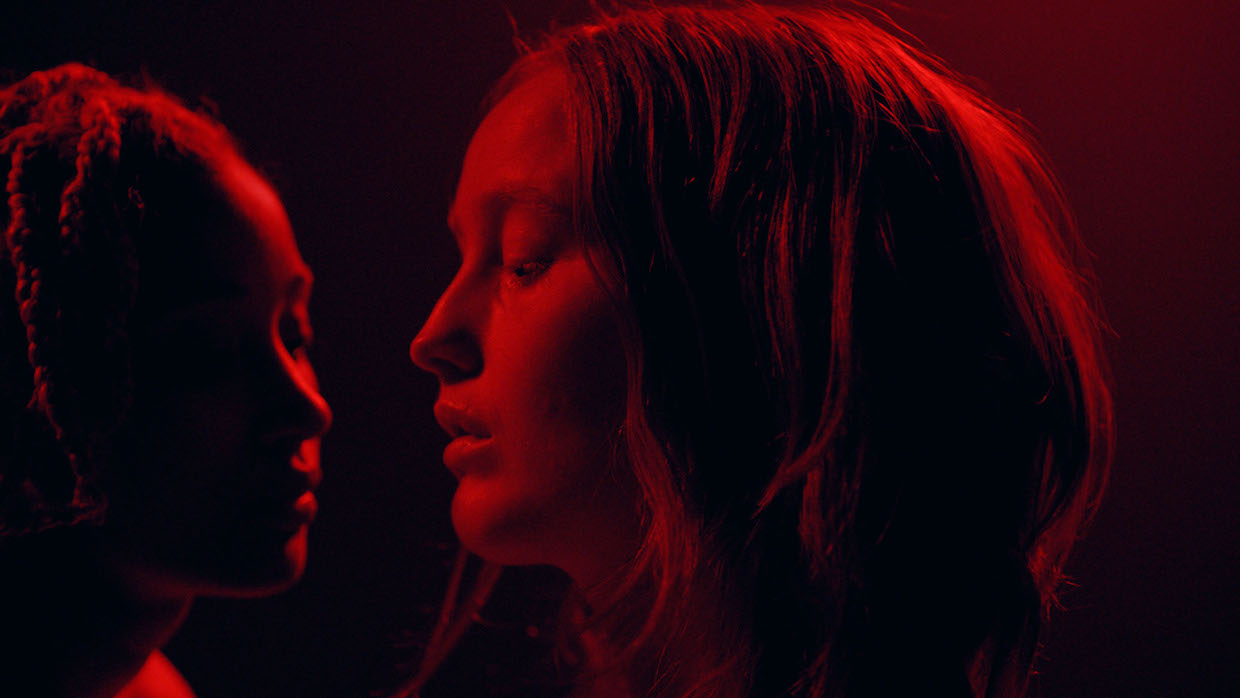 Back to selection
Back to selection
“It Cost Us Nearly a Quarter of Our Budget To Be Shut Down for Two Weeks” | Jacqueline Castel, My Animal
 My Animal, courtesy of Sundance Institute.
My Animal, courtesy of Sundance Institute. Every production faces unexpected obstructions that require creative solutions and conceptual rethinking. What was an unforeseen obstacle, crisis, or simply unpredictable event you had to respond to, and how did this event impact or cause you to rethink your film?
My Animal was not an easy shoot—we shot nights in the dead of winter in an isolated community in Northern Ontario. While there were a lot of challenges, the biggest and most obvious crisis we faced as a team was a COVID shutdown that resulted in a two week suspension of the shoot. This was what I had feared the most during prep and production, and I was forced to face that fear head on when our two leads tested positive for COVID.
Once it was clear that their health was okay, our team had to face a very daunting next task—to make sure the shoot continued and that we could finish the picture. Our producer Andrew Bronfman raced to track down the mayor of Timmins, Ontario at home, and urged him to declare our shoot an official outbreak status so that we could trigger our insurance policy, despite it being just on the cusp of regulations changing for COVID policy in Canada (we shot just after the Omicron wave hit, in February and March of 2022). Without that declaration, our shoot wouldn’t have been able to recover financially or be completed—it cost us nearly a quarter of our budget to be shut down for two weeks, which is brutal on any production but for an indie it’s deadly. While we were ultimately able to trigger our insurance, it destroyed our contingency overnight, as we were forced to use it to pay the deductible on the policy. That was pretty painful not only for production, but for our entire post team who had no breathing room later on down the line. It impacted every single department on the production.
After we had the comfort that we would at least continue shooting, the next incredibly challenging aspect was that the timeline was fluid and based upon negative tests coming back. There was no structure to it, so my 1st AD Brendon Cabral and I rescheduled the film upwards of 10 times within two weeks, balancing the needs of everything from our locations, to tricky timelines with our wolf wrangler, and cast schedules, including children who couldn’t attend school, and two cast members who had film premieres they needed to attend at SXSW (I can assure you the flight routing from Timmins, Ontario to Austin, TX is not nice).
As a result of our continuously shifting timelines, we then lost a lot of our crew who were booked on other jobs, and there was a huge staff turnover. So, in the midst of this my team and I were also last minute locating, interviewing, and hiring new crew to come onboard while getting them up to speed on where we were in the process creatively and logistically.
While the majority of our shutdown was rife with stressful high stakes decision making, there were a few silver linings. The additional time gave me an opportunity to edit the dailies in my hotel room, which made me feel more confident about scenes I was concerned about. Our post producer JP Castel was remote sharing his screen via Evercast in LA, working on shots in After Effects and assuring my DP Bryn McCashin and I that we could stabilize a technically tricky but very important shot we had done the first week, which helped us to determine that we would not need to re-shoot that scene.
It also helped Bryn and I refine the look of the film, as he was able to update our shooting LUT to adjust for our shooting environment mid-way through. We also had the opportunity to go out solo together to shoot some plates and b-roll for the film. It was a relief to escape the stress of the shutdown and work quietly with one other person getting the shots you need. I felt a lot of freedom in that, because it helped me to feel in control of a situation that was otherwise wildly out of control, and we wouldn’t have had the same time on set to get that level of detail, which really sold certain moments in the film. On one occasion, I even ended up wearing our lead Bobbi Salvör Menuez’s clothes to play Heather for a couple of wide shots which made it into the film. And once they recovered, Bobbi and our co-lead Amandla Stenberg wrote a song for the film and recorded it in their hotel room during the break, surprising me with it on the first day we resumed shooting after the shutdown. All the lyrics are about the characters in the film, and it was so good I used it for the end credits. Whenever I hear it, I’m instantly transported to the feeling of looking out over Timmins, Ontario from my hotel room, praying the movie would get completed. I’m really grateful for that song, it helped me get through it.
While it was a painful experience, what I learned during that period was how to navigate the worst case scenario—the skills I gained are invaluable and will last my entire career. It has also deepened my relationship to myself, and imbued an unshakeable confidence and a belief in my own ability to lead my team in the most difficult of circumstances. As the saying goes, a calm sea doesn’t make a good sailor.
See all responses to our annual Sundance Question here.
